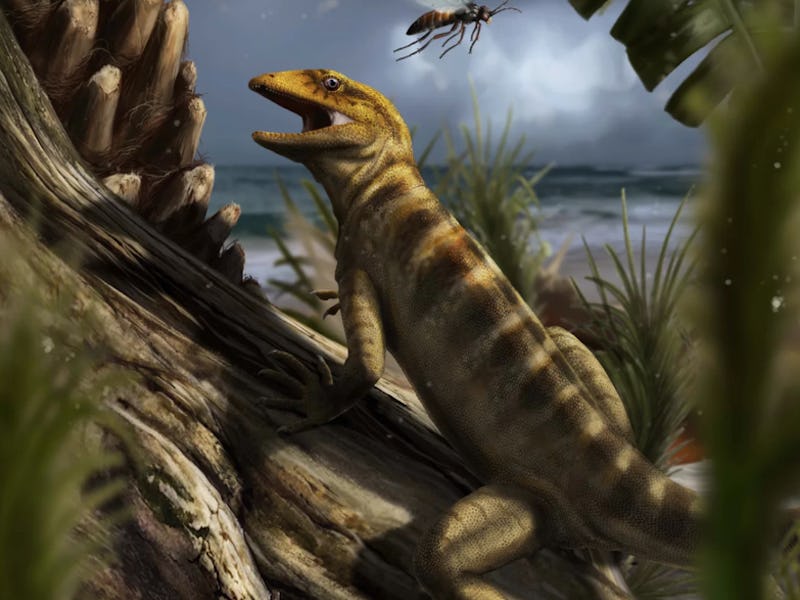"Mother of All Lizards" Fossil Dating Back 240 Million Years Is Oldest Ever
This fossil will start filling in huge evolutionary gaps.

Well, we’ve finally found her: the mother of all lizards. For years, scientists knew that there was a gap of 70 million years between the oldest known fossils of squamates — the order of reptiles that includes snakes and lizards, as well as the super freaky legless amphisbaenians — and their estimated origin. They now say this evolutionary parent has been under their noses for 15 years.
In a research letter published Wednesday in the journal Nature, an international team of researchers presented a new analysis of a fossil found in 2003 that they say demonstrates this 240-million-year-old reptile is the oldest squamate ever identified by humans. The study’s authors, led by Tiago Simões, a Ph.D. candidate in biological sciences at the University of Alberta, used high-resolution microfocus X-ray computed tomography imaging to examine a fossil specimen of Megachirella wachtleri, which was discovered in 2003 in the Italian Alps. Their examination revealed certain anatomical features that placed it at the stem of the squamate evolutionary tree, filling in a missing link
At 240 million years old. Megachirella wachtleri is the oldest known squamate.
Using their CT scans, the researchers constructed 3D models of the fossil, which revealed a set of previously unobserved features, ones that are only found together in squamates: a lower jawbone specific to squamates, a specific type of braincase structure, a unique collarbone, and some other small but significant details in the fossil’s limbs. This examination also provided evidence that M. wachtleri did not belong to some of the other phylogenetic groups that lived around the same time, as it either lacked the features that defined those groups or possessed features those groups didn’t have.
To make these comparisons, the team needed to assemble a dataset of physical features from other organisms both within and outside the squamate evolutionary tree. “I spent nearly 400 days visiting over 50 museums and university collections across 17 countries to collect data on fossil and living species of reptiles to understand the early evolution of reptiles and lizards,” Simões tells AFP. “I used this dataset … to conduct the phylogenetic analysis presented in this study.”
This study by Simões and his colleagues begins to fill in the massive fossil gap between the ancient origin of squamates and the modern members of the order, but M. wachtleri is just one specimen in a long line of reptiles. Their analysis did help to clarify some other squamate phylogeny, though: They found evidence that geckos are the oldest group of squamates that are still around today.
By nailing down M. wachtleri as the earliest squamate, the study’s authors say they’ve provided the paleontological world with a sort of “Rosetta Stone” for reptile evolution, providing a starting point for an evolutionary tree that until now had been fairly open ended. With this research, they hope to narrow that lineage.